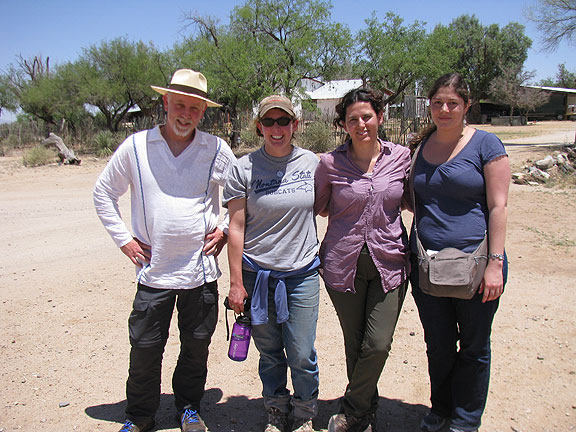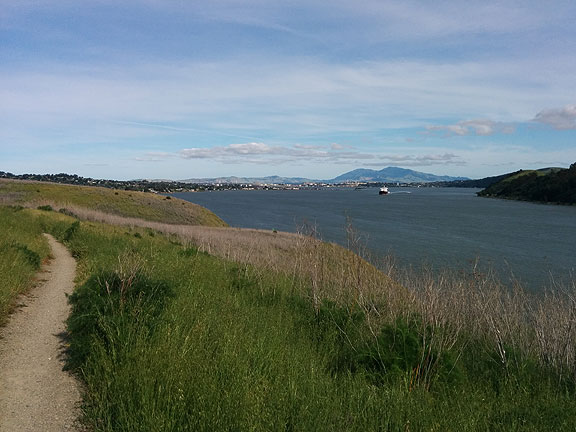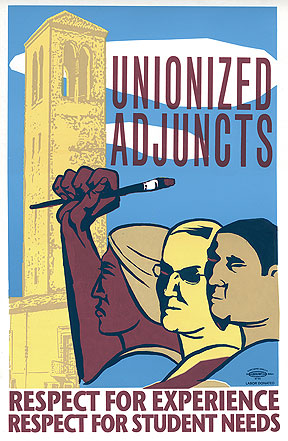Recent Posts
-
Real Crimes and the Coming Violence
September 6, 2025
-
Whither Modern Life?
June 27, 2025
-
What the Hell
June 18, 2025
-
As Darkness Engulfs Us
April 6, 2025
-
AI, Risk, and Work
January 17, 2025
-
“Things Are in the Saddle, and Ride Mankind”
December 29, 2024
-
Forgotten Futures in Seattle
December 12, 2024
-
Autocracy Defeats Neoliberalism
November 14, 2024
-
History… We’re Soaking in It!
October 2, 2024
-
A Numbing Spectacle
September 22, 2024
|
 Starr King open space with Bernal Heights in distance behind… one of the gorgeous walks I’ve been on lately. It’s the middle of July and I have to admit that I’ve let this blog slide considerably from earlier times. I don’t know if anyone is still out there waiting for my writing, but I’m guessing not too many. On the other hand, I’ve had some robot out there try to log on to my account here over 7,500 times in the past five days! I assume that when the Central American child immigrant scandal blew up, some right-wing lunatic got exercised over my most recent blog post about the border. I don’t know who has a robot that just rotates through 16 brand new IPs every hour or so, trying to log on, and I don’t know if this is supposed to be a Denial of Service Attack, or what. A subset of the 101st Fighting Keyboardists I guess (those ardent patriotic intellectuals who fill the comments sections of seemingly every website that has one!)
I’ve been PWOB, Present Without Blogging! Life is full and busy. I take a lot of walks, I’m scurrying about town giving walking and bike tours quite often, and we’ve been pushing our big summer fundraising drive (the 3% solution) for Shaping San Francisco which has gone surprisingly well. That has led me to spending a lot of hours adding new material to the archive at FoundSF.org, including over 200 new early 20th century photos from a private collector. I also confess that I am crazy for World Cup soccer and still a big baseball fan too, so there’s been way too many hours watching sports as well. I also read Dave Zirin’s excellent “Brazil’s Dance with the Devil” (Haymarket Books) which gives an excellent brief history of Brazil, the role of soccer in the country, but more importantly, a no-holds-barred exposé on the role of “celebration capitalism” in using spectacles like the World Cup and Olympics (the latter coming to Rio in 2016) to impose a neoliberal reorganization of urban space. It all benefits existing wealth at the expense of the rest of the population of course, and it’s quite analogous to the “shock doctrine” described by Naomi Klein, though in this case using the spectacle of mass sports to displace and destroy existing networks of life and community.
I read a lot, though not nearly as many hours as I think I should, more books lately but still there’s a steady deluge of magazines arriving in the mail every week. Read that grim piece “The End of Retirement” in the latest Harper’s yesterday, portraying all these over 65 folks too poor to stop working, living in RVs and driving from Amazon warehouse to state park to convention, doing short bursts of temporary (often exhausting) work. I also read Nathan Heller’s “California Screaming” in the July 7 & 14 New Yorker. Much too even-handed for my taste, treating the vicious and often personal tide of displacement and eviction as an unavoidable feature of living in a free society. Glad some friends got recognized and even quoted (Erin McElroy, Tiny, Tommi Avicolla Mecca, even Gabriel Metcalf!), but the author has that galling upper middle class know it all approach that flattens everything out. He insists the “culture war” is overstated, and that “the values that each side espouse can sound strikingly similar.” What I liked about Heller’s piece comes towards the very end. After detailing the various political objections the rich and the techies have against the dysfunctionality of local government, after having shown how dissatisfied activists are with the skewed priorities of local government (which seem to many of us to be focused on taking care of the rich and techies!), he ruminates on the problems of representative public life, but conflates public life with the broken institutions and empty rituals of consultation and deliberation. He argues:
“The West Coast radicalism of the twentieth century arose from the revelation that, in moments of extreme frustration or injustice, power could be claimed and wrongs could be corrected by exiting the system. What started with the dropout hippies and the direct-action campaigns of the sixties reverberates both in the protests of tech’s critics and in the work-arounds, hacks, and philanthropic deliverances of tech itself. The privatized mechanisms of San Francisco politics, with its warring stories of personal good will and subjective transcendence, are the fruits of that heroic nonconformism carried forward. The two groups may not share objectives, yet they’re joined by an escape from public political process that has intensified into local doctrine. The truly radical move in the Bay Area would be to return to the messy business of public debate.
“This would be tricky because public process is antithetical to tech culture. It is not fast. It is unruly and can be dispiriting. There are many people involved, with disparate ideas, and most big decisions are put to public vote—which means more people and ideas. This is the hell of regulatory blockades and referenda and open meetings to which crazy people come to read bizarre complaints off rumpled notebook paper. It is why those hoping for big, swift change leave government, and why people who worry about weak responses stand before buses. Getting anything done through public process requires convincing many, many individuals of the rightness of your dream. And it demands that you do that over and over, against a tide of disagreement, settling for half measures rather than no measures. The terms of public process are not personal or romantic but objective; it is language that could have been drawn up, literally, by committee.”
And then he slides back into middle class complacency, asserting that we have to work to stay “on the same page” and that the deeper political culture will survive the onslaught of “direct action devotees”—that the money will dry up when the Fed stops handing out billions to banks every month and “a company town will move toward becoming, once more, just a town.” Ugh. This trite neoliberal pabulum is hard to take given how profoundly San Francisco’s neighborhoods are being class-cleansed (at least formerly diverse neighborhoods like the Fillmore, the Mission, and South of Market).
On the other hand I think he’s hit the mark when he talks about the break down in public politics. Not precisely in the way he imagines it though. It’s not just that it’s so much work to get lots of individuals to agree with your views, it’s the system is wholly owned and operated by monied interests. The opportunity to comment on or offer critical amendment to public policy is mostly a charade of public hearings that only the most hardy or mentally delusional can bear to attend (or believe are sincere). But it’s also true that we saw the Occupy assemblies hijacked regularly by people who were mentally impaired in various ways. San Francisco has a particularly high percentage of psychotic people living on its streets, and plenty of them are lucid enough to want to occasionally participate in political life—as they should! Who is not troubled sometimes to the edge of sanity by this mad world, after all? Continue reading Space and Time in Summer 2014
Before I post my next entry I just want to update anyone who might have wondered: the San Francisco Art Institute Visiting Faculty Association adjuncts (including yours truly) voted 124-35 to join SEIU Local 1021, joining adjuncts at Mills College in Oakland who also recently voted by a large majority to unionize. Now begins a process of negotiation and positioning to see if we can get real improvements in our remarkably precarious conditions. My own future well-being has become much more dependent on my role as co-director of Shaping San Francisco, so if you are inclined to support this important almost 20-year-old project, we’ve launched a big fundraising effort called the “3% Solution,” hoping to get 3% of our 35,000+ monthly web visitors to sustain us for the cost of a cupla-three fancy coffees ($10/mo.), a tax deductible donation.
Written in May 2012:
 This is the desert… hundreds, maybe thousands, of people were walking through this landscape as I took this photo.  The border between the U.S. and Mexico in Nogales, Arizona (and Nogales, Sonora on the other side). This blog post is actually two years old, from a trip to the Arizona/Sonora border in May 2012. We spent six days around the Arizona-Sonora, Mexico border last week. I was accompanying Adriana on her research trip down there, mostly as chauffeur, though I participated in some of her interviews with my own curiosity. (All the contacts were hers and the overall scope and purpose of the trip was set up by her as well. The interviews from which I learned what I write about below were in their vast majority hers as well. Her project is currently developing at www.unsettlers.org.) Adriana’s cousin Carmen joined us too—she’s employed by an Argentine NGO committed to identifying human remains in various places and helping families learn about the fate of their loved ones. The organization started investigating the desaparecidos (disappeared) from Argentina’s Dirty War, and is now directing efforts towards the hundreds of people dying while crossing the U.S-Mexico border. She brought a specific body of knowledge and a very specific frame of reference to the various people and organizations we visited.
Together we went west and south, driving and walking through the deserts on both sides of the border, seeing first-hand the nightmare that confronts the steady stream of migrants trying to cross into the U.S.
 Here we are with Sarah King, a rancher on the border who is working on riparian restoration projects on her land. During the last two decades there has been a radical expansion of border enforcement in both space and intensity. The border has been largely militarized by the U.S., first in response to the North American Free Trade Agreement that took effect at the beginning of 1994, which was designed to open borders to goods and capital, but notably not human beings. After 9-11 the hysteria about terrorism has been used to build huge, ugly (and somewhat farcical) fences, triple border patrol agents, add various technologies of surveillance, and generally turn what was once a quiet and relatively friendly border into a grim echo of the Berlin Wall, South African apartheid, and Israel’s monstrous wall in Palestine. A zone of checkpoints and patrols extends at least 50 miles north from the actual boundary, making for a very thick border leaving no one untouched.
We drove west out of Tucson on our first day to Three Points, and then south to the King Anvil Ranch where we met Sarah King. She is part of a ranching family, and is involved with a local Conservation Alliance. We wanted to see some of the work she’s helped facilitate to create “induced meandering” of rains in areas of high erosion. The desert in the vicinity of the King Ranch is just gorgeous! It’s about 40 miles north of the international border in the Altar Valley east of the Baboquivari Peak Wilderness. On the other side of the iconic Bobaquivari Peak is the Tohono O’Odham Nation’s Reservation, a sprawling territory covering hundreds of square miles along the border. The U.S. border patrol is not welcome to patrol their land.
 King Anvil ranch sign  Continue reading The Border is Thick Continue reading The Border is Thick
 Had to put a nice photo first… this is on the Bay Trail north of Carquinez Strait looking east/southeast towards Mt. Diablo on May 4.  Art Hazelwood produced this poster to help promote unionization among the adjunct (visiting) faculty at the San Francisco Art Institute I have been teaching college classes at the San Francisco Art Institute since 2011, and just cast my vote to join SEIU 1021 in a current union election campaign to organize all of us “temporary” teachers (i.e. visiting faculty, adjunct professors, etc.). Adjuncts at Mills College over in Oakland just voted 68-19 to join the same local, and soon our colleagues at the California College of the Arts will be voting too. There’s a huge nationwide push on among adjuncts to unionize and I’ve been getting steady news about it all thanks to Joe Berry’s excellent email newsletter for COCAL (the Coalition of Contingent Academic Labor).
There’s no small irony for me in this moment and this vote. I trace my own involvement with organized labor back to the mid-1970s when I volunteered to work on the UFW lettuce boycott in 1974 in Oakland, and was actually fired from Books Inc. in Santa Rosa at the end of 1977 for supposedly trying to start a union there. (Actually I had knocked on the doors of the Retail Clerks Union one floor above our bookstore in Coddingtown Mall, but they had never been there and had not responded to my phone message. Writing a letter to the chain owner asking for a 15% store-wide raise–after a 41% increase in December sales from 1976 to 1977–led to my firing by the store manager before my letter was ever delivered. I contacted the National Labor Relations Board and they got me a two-week back pay settlement some months later, and Books Inc. posted signs in all their 27 stores promising not to interfere with “protected concerted activities” which my meager effort was). Later I volunteered on the JP Stevens boycott, and did minor support work on the UMW Coal strike in 1978 and the OCAW refinery strike in 1979. This was the same period in which I read Marx, and met up with the Union of Concerned Commies.
By fall 1980 we were working on the first issue of Processed World. We wanted it to be a place for “dissident office workers” to write, to joke, to share ideas, and create bridges among workers and workplaces across various geographic, class, racial, and ideological boundaries. The Old and New Left were still very much part of the scene in 1980, and we were convinced that Jimmy Carter was as far right as the U.S. could possibly go, so we were not very worried about Reagan having any chance of winning the election that fall. (A great history of the period 1968-84 is in Jefferson Cowie’s “Stayin’ Alive: The Last Days of the American Working Class“–in it he convincingly shows how Nixon was the last New Deal president, and Carter was the first neoliberal president, meaning it was Carter who put in motion the shattering of the old labor movement, the deregulation and privatization agenda that we saw Reagan/Thatcher radically deepen and accelerate, etc.). In the first issue of Processed World we got to cover the largest ever private sector white collar strike in San Francisco at the Blue Shield health insurance offices around the city. Office and Professional Workers (OPEIU) Local 3 was the union, about 1100 workers were on strike, mostly women of color (we learned much more about the strategic leverage they had–and didn’t use–several years later when a new Processed World contributor told the story he saw as a consultant to the white male managers who were utterly clueless about how the work was conducted by their female workforce).
The Blue Shield strike was at that big turning point just before Reagan fired all the air traffic controllers. But it was a harbinger of what was taking shape. OPEIU Local 29 over in Oakland was on strike at the same time, against Blue Cross, and facing much the same set of demands and possibilities as their colleagues in San Francisco facing Blue Shield. Rather than maintaining a united front, Local 29 settled for a very weak agreement in the middle of the strike, completely undercutting the bargaining position of Local 3. Simultaneously Local 29’s own members were on strike against the East Bay AFL-CIO Council of Building Trades Unions who were denying them cost of living wage increases! Building Trades Union bureaucrats blithely crossed the picket lines daily of their striking secretaries and other office support staff. This everyday business unionism was so taken for granted that none of these raised much of a ruckus at the time. By the time OPEIU Local 3 settled the Blue Shield strike in 1981, only 150 workers returned to work, and the terms of the deal were more or less what had been offered at the outset of the strike. It was a devastating defeat, but by April 1981 there was Local 3 representatives on stage in Justin Herman Plaza on National Secretaries Day crowing about the great “union victory” their miserable strike had produced!
We covered many strikes and other labor issues over the years in Processed World and it was remarkable how consistently the unions would aggressively impose bad contracts on their members during this period of capitalist restructuring. Could they have bucked the trends at the time? As willing participants in the capitalist economy, with personal stakes in the maintenance of their own privileged income and access to universities, country clubs, etc., probably not. But by staying fully within the logic of a narrow business unionism, seeking only the best deal for the existing members, class-wide solidarity (never very strong in the U.S. anyway) was routinely repudiated as a strategy. The legally allowed tactics for the shrinking number of organized workers to defend themselves made sure they would keep shrinking, and watching their standard of living deteriorate, or at best stagnate, while the owning class took more and more (all this is well documented by now in the burgeoning research bolstering the 1% vs. 99% occupy meme).
We even discovered an interesting alternative history of a different kind of union that appeared among social workers in the period 1966-75, that had to break away from the existing union (then Building Services Employees International Union Local 400). Of course the social climate was quite different in that era than in the 1980s, but it was fascinating to find a working example of a horizontalist, transparent, democratic union that refused to sign contracts, that understood its strength as based on the daily exertion of power by its members at the workplace. Continue reading Solidarity… Forever?
|
Hidden San Francisco 2nd EDITION!

NEW 2nd EDITION NOW AVAILABLE!
Buy one here
(Pluto Press, Spring 2025)
|



















